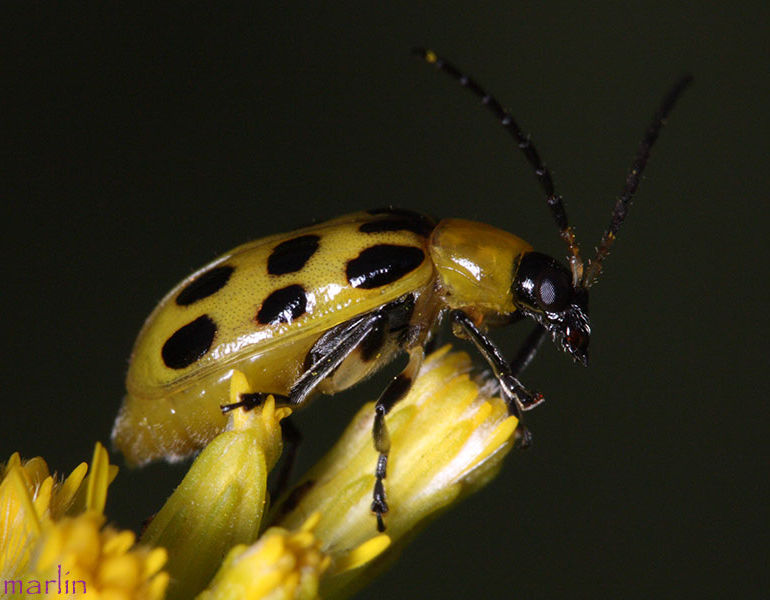Spotted Cucumber Beetle
This beetle has filiform antennae with 11 antennomeres (segments)
Both the larval and adult stages are considered major agricultural pests, attacking not only cucumbers and corn, but soybeans and sweet potatos as well. Soil application of insecticides to control corn rootworms represents one of the largest uses of plant protection products in North America.
Description: The adult is about 1/4-inch long, yellow-green with a black head and antennae. There are twelve black spots on the wing covers (elytra). The larva (rootworm) is cream colored and about 3/4-inch long when fully developed, with a brown head capsule and bearing three pairs of short legs.
Life Cycle: Adult beetles overwinter and become active in the spring, feeding on a wide variety of host plants including weeds and grasses. They lay eggs in the soil. Eggs hatch in 5 to 11 days and young larvae crawl through the soil and feed on roots of corn, sorghum or other hosts. Larvae develop through three stages (instars) in 10 to 16 days before pupating and then emerge as adults after 5 to 12 days. Thus, the development takes 20 to 39 days, depending on soil temperature.

These beetles love all sorts of flowers – especially goldenrod. They are extremely numerous in my flower gardens here in northern Illinois. Some years they eat the heads of my zinnia flowers so it’s no use – the flower is gone. Oh well. I don’t use any chemicals in my gardens, so they are welcome to all they can eat.
Family Chrysomelidae – Leaf Beetles
Beetles Index | Longhorns | Leaf Beetles | Soldier | Blister | Lady | Scarab
